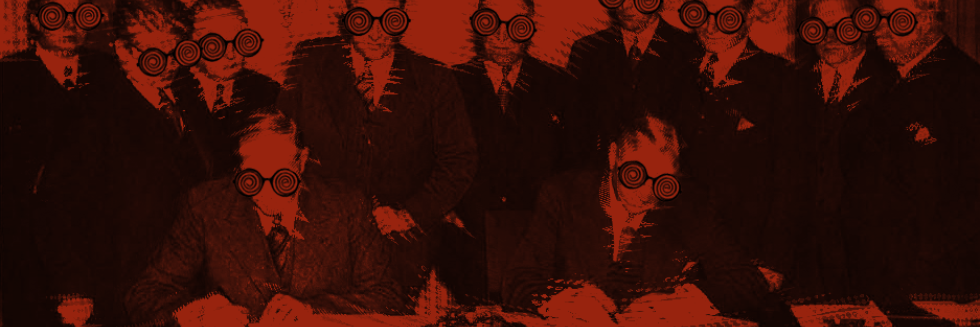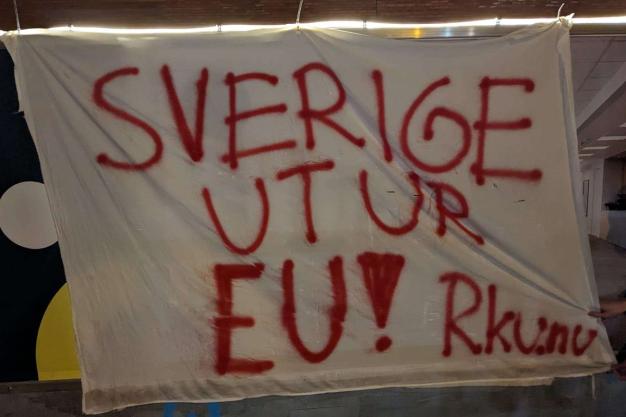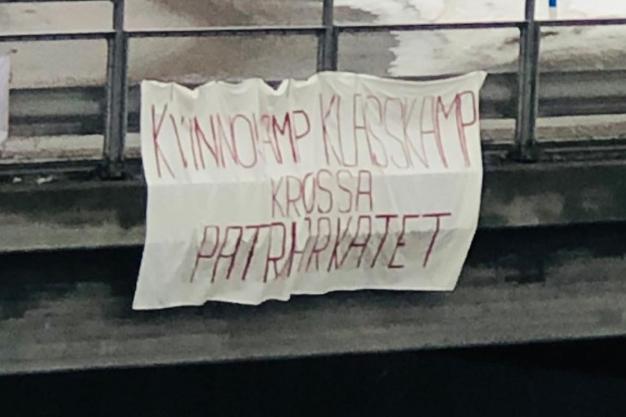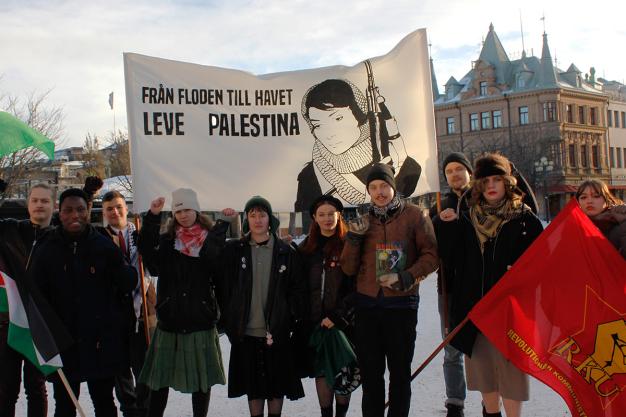Communism or social democracy, revolution or reformism, class struggle or class collaboration. These are the lines of conflict that run deepest through the history of the labor movement, and they have been present almost from the beginning. As the Social Democrats gained more power (they continuously held government positions between 1936 and 1976), the latter approach became dominant in Swedish social development. The process of making consensus the norm in the labor market began with the Collective Bargaining Act of 1928. Industrial action (strikes, lockouts, etc.) were prohibited as long as collective agreements were in place. This meant that the workers' offering to the capitalists in exchange for agreements became a duty to maintain peace. The trade unions themselves became responsible for ensuring compliance with this peace obligation, which gave them a controlling function over the workers rather than being their own weapon.
The event that more than any other represents the Swedish handshake between labor and capital was the Saltsjöbad Agreement of 1938. With this agreement, the strike weapon was further restricted, and the negotiation process was regulated and centralized. The tendency toward centralization continued at the LO (Swedish Trade Union Confederation) congress in 1941 when changes were made to the statutes so that any strike affecting more than 3% of a union's members became the responsibility of the LO leadership, rather than that of the union itself. Additionally, veto power was granted to union boards to adopt an agreement even if a majority of members were opposed to it. Today, it may sound foreign when agreements are not subject to a vote at all, but at the time, it was a significant limitation of trade union democracy.
In the official narrative from LO and SAF (Swedish Employers Association, precursor to today's Confederation of Swedish Enterprise, Svenskt Näringsliv), the aforementioned changes in the Swedish labor market are described as common sacrifices for the common good. In reality, the result was primarily the subjugation of the workers and the capitalists obtaining labor peace and minimal disruptions in production. That was the reason why the capitalists wanted to shake hands with LO and achieve consensus with the labor leaders. It had been proven that they couldn't outlaw or crush the workers' organizations, as they had attempted to do in the early years of the labor movement. So the only option then was to tame them, make them an innocuous and integrated part of bourgeois society that wouldn't step outside its boundaries. That wouldn't attempt to overthrow capitalism and establish socialism.
A prerequisite for class collaboration is that the workers accept capitalism and the pursuit of profit as the cornerstones of society. For the Social Democratic representatives in the LO leadership, this was probably not a major problem. However, after the Great Depression, the system was not held in high regard among the Swedish working class. In this context, the Social Democrats' vision of the welfare state, with its false dream of harmony of interests between classes, played a crucial role in legitimizing capitalism. The expansion of the welfare state and the improved material standards that the working class subsequently enjoyed during the post-war boom definitely contributed to fostering the belief that the development of capitalist society, combined with a strong social democracy, could provide everyone with a good life in the future.
But beneath the surface, discontent was simmering. The interests of the working class and the capitalists are fundamentally opposed, and this fact cannot be smoothed over indefinitely. On December 9, 1969, 35 miners staged a sit-in at LKAB's mine in Svappavaara, triggering the Great Miners' Strike, which lasted until February of the following year. That was the last straw that broke the camel's back. 1970 became the year of wild strikes in Sweden. The working class had had enough and, without the blessing of union leaders, engaged in independent struggle for higher wages and better working conditions. The promise of consensus and peace between labor and capital was momentarily forgotten. The workers no longer wanted to acknowledge the reformist leaders' right to negotiate and decide on their behalf.
It was also during these events that the Revolutionary Communist Youth's parent party, the Communist Party (then known as KFML(r)), was formed by communists and class-conscious workers who saw the wild strikes as the key to breaking the class collaboration and consensus. They rallied around slogans such as "long live the wild strikes," "rely on our own strength," and "put the union aside." Through the spontaneous strike struggle, the workers had taken away the leadership of the economic struggle from the reformists, and now the task was to make the struggle conscious, organized, and oriented towards the socialist revolution as the goal. They believed that the old Communist Party (the Left Party of today) and the new left of 1968 were incapable of taking on this task, which is why they broke with them and built a new organization.
The construction of the new party was necessary, and many important lessons were learned during this period, but the revolution did not materialize. The wave of strikes subsided over time, and in the 1980s and 1990s, the neoliberal counter-reformation began dismantling the welfare system and the reforms the working class had won in previous decades. The global balance of power also changed with the fall of the Soviet Union and China's capitalist turn during the same period. This created a significant void as socialism ceased to be seen by many as a real alternative to capitalism. Margaret Thatcher's words, "There is no alternative," became the accepted truth. We are still living in the same neoliberal period, and the result has been a very one-sided class struggle, with organized attacks almost exclusively coming from the side of capital. If the movement no longer has the strength to defend the reforms it previously won, they can easily be taken away.
Despite capital being on the offensive, the Social Democrats and the Swedish Trade Union Confederation (LO) (to no one's surprise) show no willingness to respond to their attacks with their own offensive. Instead, they pretend that the power relations between labor and capital have not changed and continue with the same politics of consensus as before. In practice, this means they serve everything the corporations ask for on a silver platter. We can see examples of this within LO, for example, in how several unions act during collective bargaining negotiations. They withdraw strike notices and then sign weak agreements that are rightfully criticized by the members. We see it in their actions against, for example, the Dock Workers' Union and the Syndicalist SAC, and in how particularly the Union of Industrial and Metal Workers (IF Metall) and the Union of Municipal Workers (Kommunal), along with the white-collar unions, capitulated in the matter of employment protection legislation (LAS). We can also clearly see it in the Social Democrats regarding employment protection legislation and the issue of market rents and the right to strike. These are just a few examples that have been relevant in recent years. Not to mention all the deregulations, privatizations, and sell-offs they have pushed through, policies that even previous conservative governments did not dare to implement. The era of class collaboration is over, but social democracy pretends it isn't.
So, what does the Left Party (Vänsterpartiet) do when the Social Democrats continue to disappoint? It is true that they abandoned the class struggle and their revolutionary heritage long ago and became reformists in practice. However, recently, their leadership seems to have wholeheartedly embraced class collaboration, even in theory. An example of this is their so-called new economic policy (which is essentially old social democratic policy) presented by their new party leader Nooshi Dadgostar and new chief economist Sandro Scocco. They explain that they want to see state investments in industry and research to increase the productivity and competitiveness of Swedish business (!). Gone are the demands for collective ownership and socialism. We can also see this in the rhetoric of the Left Party regarding employment protection legislation (LAS) and market rents. Regarding LAS, they were okay with it being weakened as long as the changes came through negotiations between labor and employers, rather than through legislative changes. Therefore, they refrained from bringing down the government as they had previously promised. When it came to market rents, they did keep their promise and brought down Löfven, which of course was good, but in their rhetoric, the emphasis was mostly on the importance of negotiations. "The Swedish model is to negotiate together" was a recurring message in their outward communication. It elevated class collaboration to a principle and nostalgically yearned for a time when power relations and the conditions of capitalism were different. It is a dead-end for those who are serious about wanting socialism.
Over time, class collaboration has led to passivity and a mindset of relying on union representatives among the membership of the working class mass organizations such as the Swedish Trade Union Confederation (LO). This is both due to organizational structures and negotiation procedures, as well as psychological factors. "Those up there will take care of it." It has likely also contributed to a much lower percentage of the working class being organized and politically active. When politics becomes something handled "up there" through negotiations and handshakes, it becomes difficult to see a place for oneself and one's class as an active subject. As a force that can influence the development of society in a different direction.
The wild strike wave of the 1970s proved that the working class itself can take the initiative in class struggle, and it must do so in order to succeed. "The emancipation of the working classes must be conquered by the working classes themselves," as Marx said. However, our situation today is in many ways different from what it was back then. While class collaboration thrived in a period of increased material standards, it is said that our generation is the first in modern times to have it worse off than our parents. Additionally, today's capitalism and the climate crisis it has created has put us in a race against time like never before. Reformism and class collaboration are incapable of solving these challenges. Here, there are seeds for a new organized struggle for the interests of the working youth and the working class, but, of course, there are also unique challenges. These facts make it clear that class struggle and socialism must be the way forward. All illusions that a reinstatement of class collaboration would be the path must be rejected.
Arvid Taawo
Arvid Taawo is a member of the central committee of the RKU







